Documentary on the Making of The 500 BrushStrokes – Peru
Directed by: Luo Yunfei
On July 9 (local time), 500 Brushstrokes: An Abstract Portrait of Peru ("500 TRAZOS: UN RETRATO ABSTRACTO DEL PERÚ") officially opened at the Museo de Arte de Lima (MALI), Peru’s foremost art museum. As Wu Jian’an’s first solo exhibition in South America, the show centers on the artist’s latest monumental work from 2024–2025: 500 Brushstrokes for Peru, a 12-meter-long and 5-meter-high ink and mixed-media paper-cut collage. The work brings together the bodily traces of 459 residents of Peru from diverse backgrounds—spanning gender, age, class, geography, language, and culture.
Prominent guests attended the opening, including Pedro Olaechea (former President of the Peruvian Congress), the ambassadors of Ecuador, Switzerland, and Germany to Peru, and Luis Martin Bogdanovich, director of the Lima Historic Center Rehabilitation Project. Many participants of the artwork also traveled to attend the ceremony, for many of them a first visit to Lima. Within this monumental installation, they were able to reconnect with their own brushstrokes, witnessing moments of reunion across geographical and generational boundaries.









Opening Scene – 500 Brushstrokes: An Abstract Portrait of Peru
Thanks to: Museo de Arte de Lima (MALI), COSAS
A Cultural Journey Through Barriers
500 Brushstrokes for Peru is the latest chapter in Wu Jian’an’s ongoing 500 Brushstrokes project, which began in 2016. It was co-curated by the artist and his close friend Pablo Espinel— an international contemporary art advisor who has lived in Peru for many years — who also served as executive producer. Espinel observed that Peru, while home to a wide range of geographic regions, ethnicities, languages, cultures, and social classes, still exhibits internal divisions and ruptures: Indigenous people and cultures from the highlands and jungles remain largely marginalized; Quechua and Aymara are spoken by millions yet are seldom reflected in mainstream media discourse; and misunderstanding and tension persist between the middle class in Lima and Indigenous communities in the Andes.
This journey, navigating both geographic and cultural boundaries, was prompted by these insights and deeply moved the artist. As Wu put it:
"We probably won’t change anything. Even when people see the finished work, the knots in their hearts may not be untied right away. But what the work shows is your brushstroke beside someone else’s. Whether you like it or not, when they’re placed together, you can still see a sense of balance, a sense of harmony. That’s all I want to do.”
Wu Jian'an, Pablo Espinel, and the art team during their journey
Thanks to: Luo Yunfei
In August 2024, over the course of just over three weeks, 500 Brushstrokes for Peru traveled across South America’s coasts, mountains, valleys, rainforests, and lakes, with an inclusive attitude toward diversity and difference. Thirteen brushstroke workshops were held in varied locations: at museums, galleries, and hotels in Lima; at the National University of Fine Arts in the highland city of Cusco; at the Intercultural University in the Amazonian region of Quillabamba; and in Carabayllo, an impoverished neighborhood on the outskirts of the capital. The project also extended to Indigenous Andean communities in Chinchero and Accha Alta, the mysterious stone ruins of Vilcabamba, and the Titicaca Plateau, where workshops were held on native islands such as Taquile and Uros.
At the outset, the artist made special visits to weaving communities with long-standing dyeing traditions such as Chinchero. There, together with Indigenous artisans, he created water- and paper-friendly pigments using traditional plant-, animal-, and mineral-based dyes. These alternatives to Chinese ink provided participants with more expressive options, reflecting a desire for cross-cultural dialogue and offering a perspective on sustainability in visual language, rooted in local heritage and the relationship between nature and culture.




Brushstroke Collecting Workshops – 500 BrushStrokes for Peru
Thanks to: Luo Yunfei
Chinese filmmaker Luo Yunfei and Peruvian cinematographer Carlos Garavito, among others, closely documented the entire process. Together they recorded 19 interviews with teachers, Indigenous weavers, young artists, and nonprofit founders working in underserved communities. These invaluable materials will be used by Luo Yunfei to direct a documentary film that delves into the journey behind 500 Brushstrokes for Peru—a voyage spanning tens of thousands of kilometers and thousands of meters in elevation. The film will vividly capture the stories of the people involved and the cultural encounters and emotional resonances made possible through art.
Paper and Ink as Medium: Triggering the Subconscious Through Improvisation
Using xuan paper and ink, combined with paper-cutting and traditional Chinese painting mounting techniques, the 500 Brushstrokes series continues Wu Jian’an’s exploration of visual order and the principles of manual creation. At the same time, it encourages spontaneous expression of emotion and thought in the moment of making.
The core working method of the series is “collaging improvised brushstrokes.” Due to the varied sources of these strokes, the project has developed along two distinct trajectories. The first comprises brushstrokes accumulated by the artist himself, along with contributions from a small circle of close friends. These works can be seen as records and reflections of the artist’s momentary states of being, with the composition of each piece determined almost entirely by Wu’s intuitive visual perception. This direction has yielded a wide range of visual experimentation. Works from this branch of the series have been exhibited at venues including the China Pavilion of the 57th Venice Biennale, the University of Chicago Center in Beijing, and the Ichihara Lakeside Museum in Japan. Institutions such as The Metropolitan Museum of Art (New York), the Berkeley Art Museum and Pacific Film Archive (BAMPFA), the Kalamazoo Institute of Arts, Guangdong Museum of Art, and the Pucheng Art Museum/Fan Di’an Art Museum have acquired works from the series for their permanent collections.
Exhibition View – China Pavilion at the 57th Venice Biennale
Thanks to: Art China

Exhibition View – Lines of Thought: Gestural Abstraction in the BAMPFA Collection
Thanks to: Berkeley Art Museum and Pacific Film Archive

Exhibition View –A Bridge Between Two Worlds: Works by Wu Jian'an
Thanks to: Kalamazoo Institute of Arts
The other trajectory, represented by 500 Brushstrokes for Peru, brings together brushstrokes contributed by specific communities and originates from a participatory art practice that encourages social engagement. Through repeated introductions, lectures, and workshops, the artist takes brushes, xuan paper, ink, and colors beyond the studio to interact with unfamiliar and often distant communities, inviting people to join this “game of expression.” This direction evolved from interactive workshops the artist led at The Metropolitan Museum of Art and the Museum of Fine Arts, Boston in 2016, and formally launched during the 2017 Echigo-Tsumari Art Triennale. Since then, it has traveled to locations including Beijing, Shanghai, Jingdezhen’s Fuliang County, Nanhai in Guangdong, several countries along the Lancang-Mekong River Basin, and Inuit communities in Nunavut, Canada.

Exhibition View – The House of 500 Brushstrokes, 7th Echigo-Tsumari Art Triennale
Photo: Osamu Nakamura
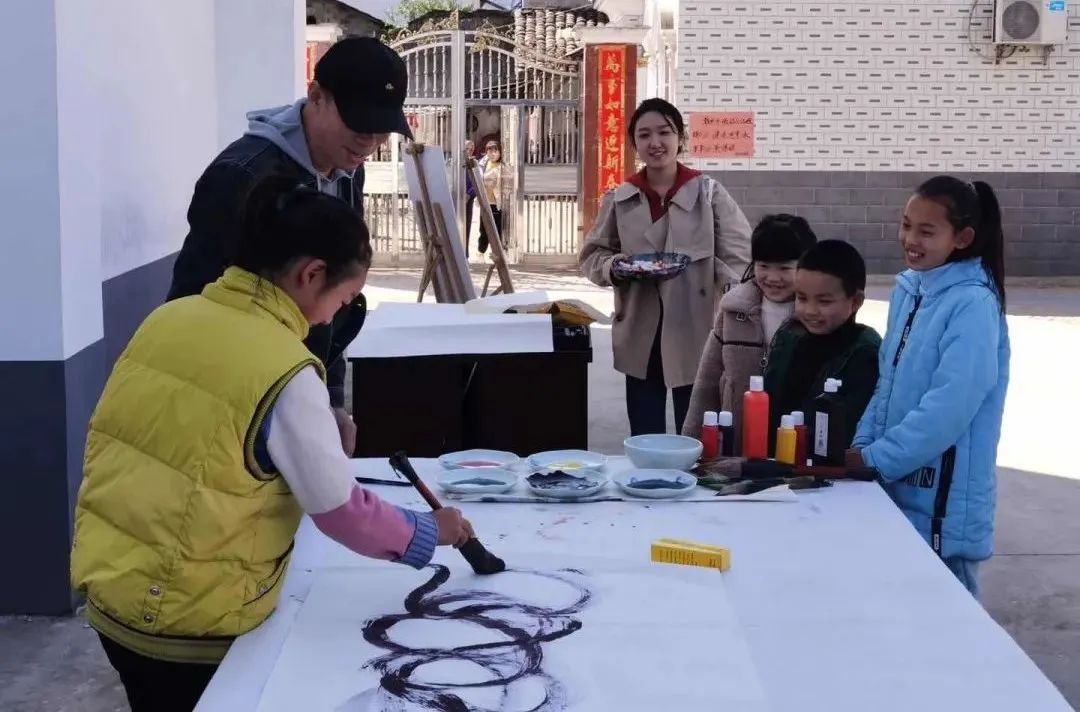
The 500 Brushstrokes for Fuliang Workshop Held in Hanxi Village, Fuliang
Photo courtesy of Art at Fuliang
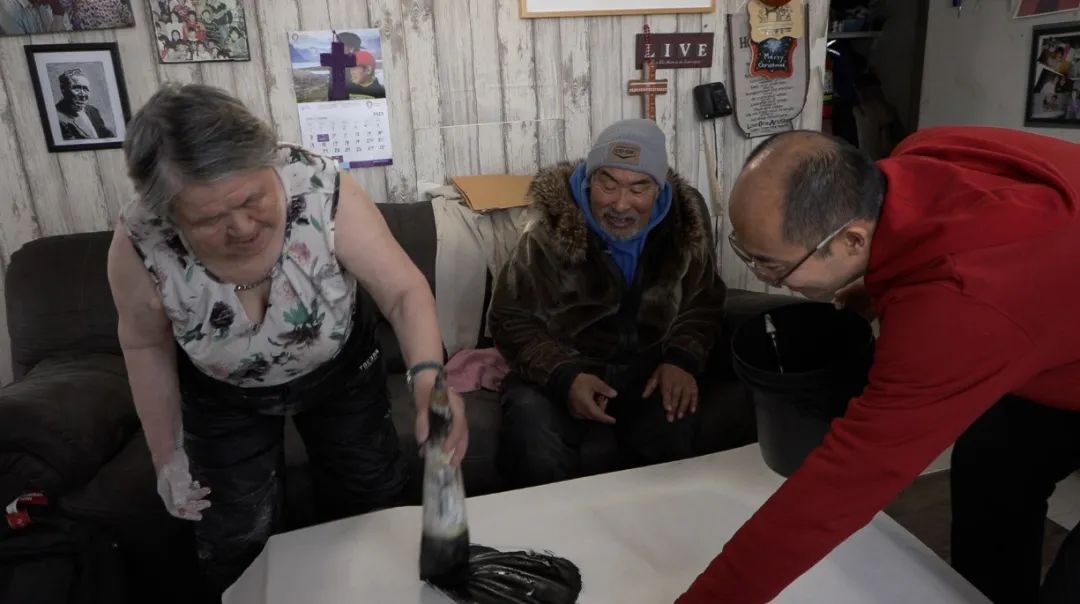
Wu Jian’an Collecting Brushstrokes in the Inuit Community of Pangnirtung, Northern Canada
Photo: David Posey
With its persistent focus on paper, ink, traditional mounting techniques, and physical mark-making, the 500 Brushstrokes series seems to respond to a collective emotional longing for the “handmade” and the “real” in a rapidly digitizing and technologized world. It emphasizes the irreplaceable connection between physical experience and artistic creation. Rooted in artistic and cultural traditions, the series deconstructs and reconfigures three deeply meaningful forms in Chinese culture—calligraphy, ink painting, and paper-cutting—and seeks to forge a contemporary visual language intelligible to a global audience: Ink, as an open medium, invites broader participation in artistic creation; paper-cutting is not used here to reproduce folk imagery but instead abstracts fleeting gestures into mobile time-slices; collage techniques—partially inspired by Cubism and Fauvism—extend the pictorial surface into a space-time framework that holds and constructs new forms of collective relations.
500 Brushstrokes aspires to explore the authentic state of existence. Participants, upon picking up a brush, are encouraged to abandon all preconceptions and planning—to make a single, spontaneous mark on their own blank sheet of xuan paper. No drawing experience is required. Freed from linguistic expression, the movement of the body precedes rational thought. The material qualities of xuan paper, brush, and ink offer tremendous tolerance, revealing their unique ability to capture and preserve subtle transformation. In an instant, lines and splashes—whether large or small, halting or fluid—emerge as abstract symbols of improvisation, replacing conscious, representational control. Body, emotion, and deep memory flow together, and in dialogue with natural materials, an unrepeatable moment of existence comes into being.
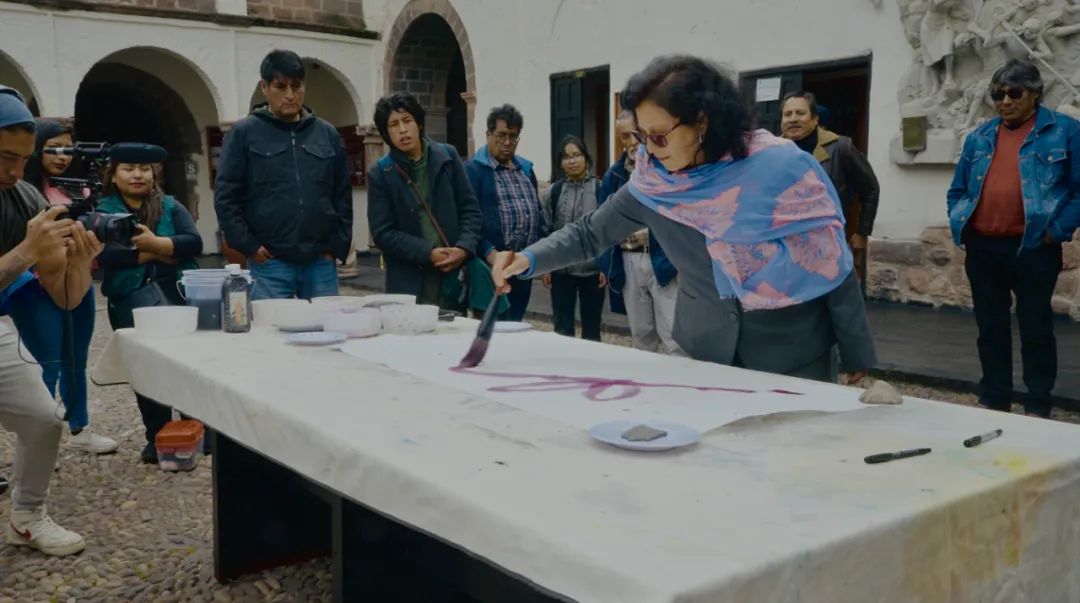



Brushstroke Collecting Workshops – 500 BrushStrokes for Peru
Thanks to: Luo Yunfei
Embodied Processing through Paper Cutting and Collage
Brushstrokes serve as a form of “embodied representation”—Wu Jian’an describes them as each participant’s “abstract self-portrait.” In his Beijing studio, the artist carefully cuts each brushstroke from its original sheet of paper, preserving none and discarding none. With a sense of wonder and fragmented impressions of Peru as an outsider, he meticulously reassembles them into new compositions, creating a collective portrait composed of unrestrained “confessions” from a specific group of people.
While the birth of a brushstroke takes only a moment, the process of collaging them into a complete work is long and labor-intensive. The artist uses a sharp knife to carve along the edges, cutting out every trace of ink and color. Because he is working not with familiar shapes, but with the expressive gestures of strangers, the process demands an especially focused and meticulous attention. The repeated movements of hand and blade—tracing and retracing the contours—become a kind of “copying” or “mimicking” of the original marks.





Wu Jian’an at the Creation Site of 500 Brushstrokes for Peru
Thanks to: Luo Yunfei
In recent years, embodied cognition has gained increasing attention in psychology, philosophy, and neuroscience. Research in this area suggests that when individuals consciously or unconsciously observe and replicate the actions of others, the brain's mirror neuron systems are activated. These systems help decode the behaviors of others, enabling us to perceive their intentions, emotional states, and motivations, thereby fostering a subjective connection between self and other through a sense of coordinated resonance.
On this level, each brushstroke may be seen as a miniature resonance device. The paper-cutting process intensifies the relationship between the artist’s body and the visual forms, allowing him to more fully absorb the information carried within each stroke—information that belongs to a specific individual. In this sense, the act of cutting becomes a way of establishing “embodied empathy” with each participant. For Wu Jian’an, observing others’ brushstrokes is indeed one of the most exciting aspects of the 500 BrushStrokes project: “I’m genuinely curious about what other people’s strokes look like. To this day, every stroke I’ve seen has been remarkably different.”
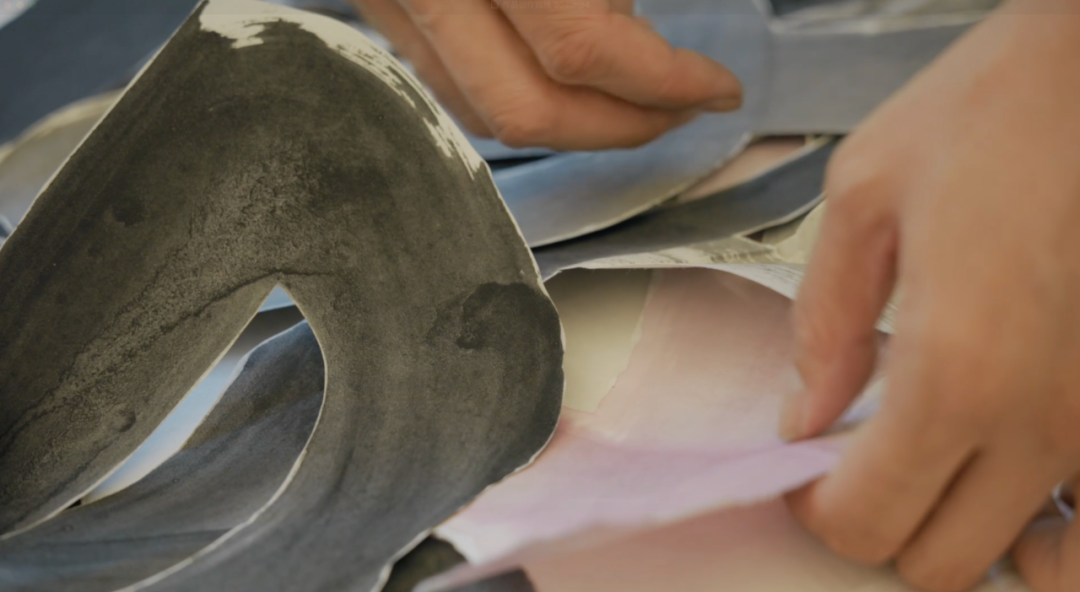
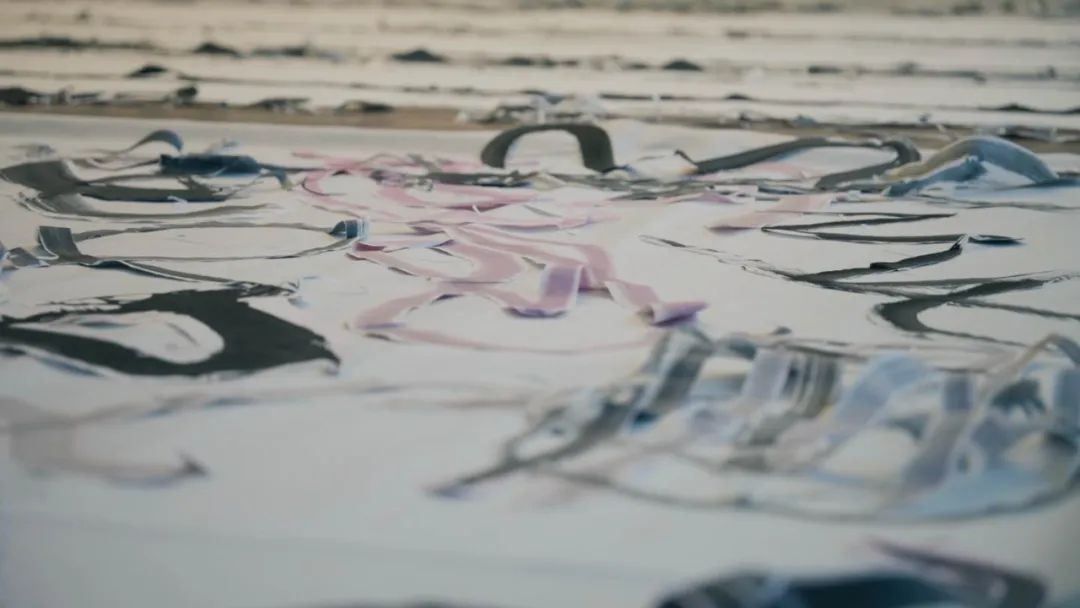
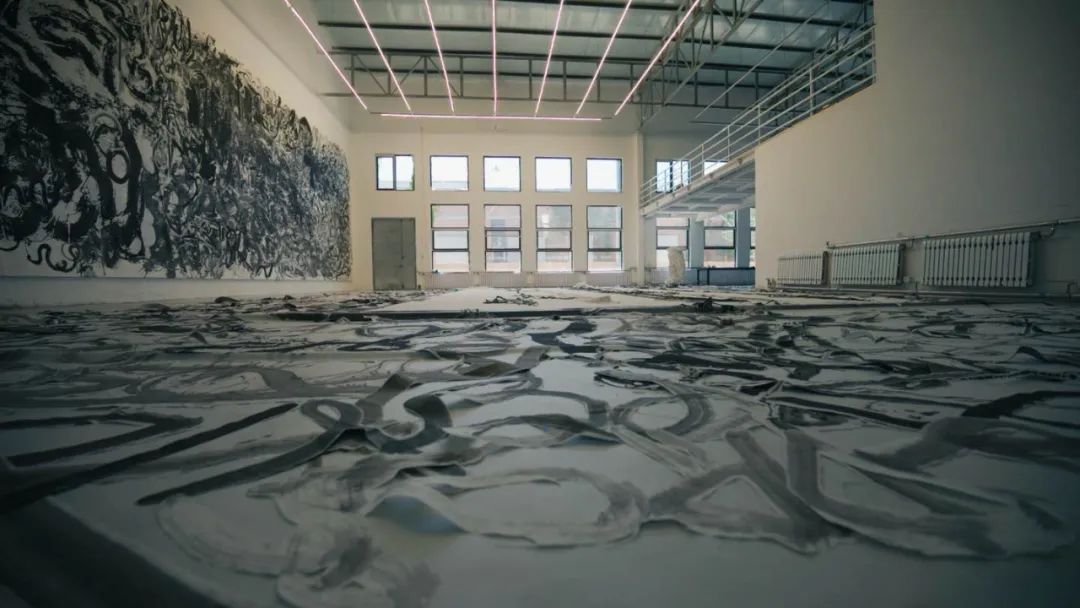
Wu Jian’an at the Creation Site of 500 Brushstrokes for Peru
Thanks to: Luo Yunfei
In fact, many participants are often surprised by the mark they leave behind after trying to empty their mind—each stroke seems to reveal an unknown or unacknowledged part of themselves. Drawing on Maurice Merleau-Ponty’s theory of the embodied transcendental subject, the act of “presenting oneself to oneself” is among the most fundamental characteristics of human existence. This may help explain why so many participants find joy in the interactive workshops of 500 BrushStrokes.
Each brushstroke is a free and unruly abstract visual language. Their aggregation cannot be entirely controlled by the artist. Sometimes a certain stroke simply refuses to fit into the visual “balance” he has carefully constructed, or it effortlessly disrupts the painstakingly woven visual harmony—making the creative process feel painstaking and difficult. Yet Wu has learned to endure this kind of creative “agony”:
“It’s taught me to wait. You have to be patient. No matter how uncomfortable the situation in front of you may feel, there will always be one stroke that comes in and changes everything. In other words, balance may appear entirely outside your design and intention. The more you try to impose your own will, the farther you may drift from the map where the truth is hidden.”





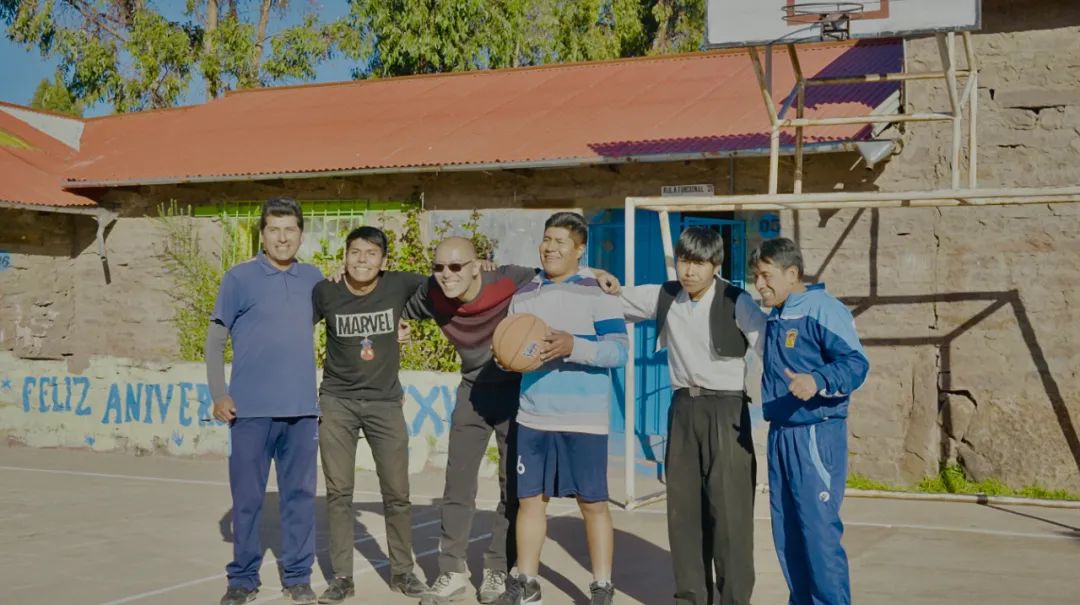
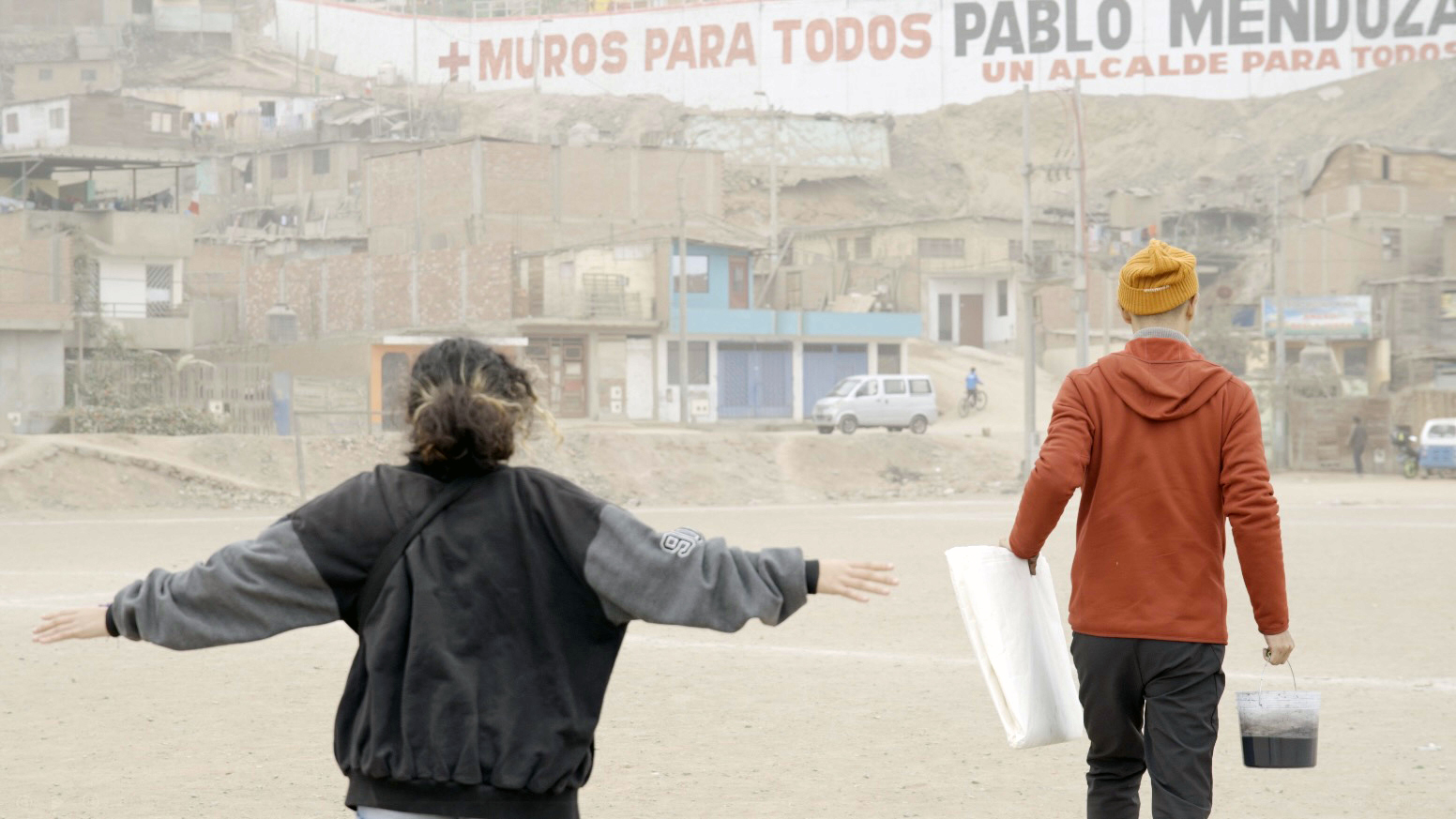


Wu Jian’an at the Creation Site of 500 Brushstrokes for Peru
Thanks to: Luo Yunfei
From “Eastern Contexts” to the “Global South”: A Multi-Community Symbiotic Cartography
At the opening ceremony, Sharon Lerner, Director of the Museo de Arte de Lima (MALI), expressed her sincere joy at the “return” of the work. She said, “MALI has been paying attention to and supporting the 500 Brushstrokes for Peru project from the very beginning, including co-organizing one of its important brushstroke collection workshops. This is a work that truly connects different people and offers a kind of cultural proposal that encourages social participation and community interaction. We have placed it in the museum’s iconic main hall on the first floor, because this is a truly public space that belongs to the community and to different communities—it is completely free and welcomes anyone to come in at any time to see this monumental painting installation.”
500 Brushstrokes for Peru is one of the largest single works in the series. It is a “portrait” of living people, while also challenging conventional impressions of “portraiture.” More than 400 brushstrokes of vastly different styles intersect with each other, co-creating a dense and vibrant visual fabric between two and three dimensions. It is like a polyphonic symphony of individual emotions, and also a bodily map that spans race, language, geography, and class. Every stroke matters; every stroke is irreplaceable. In this sense, a stroke made by a child from a shantytown is no different from one made by the owner of South America’s oldest winery.



Opening Scene – 500 Brushstrokes: An Abstract Portrait of Peru
Thanks to: Museo de Arte de Lima (MALI), COSAS
Over the past decade, the “Global South” has become one of the key terms in contemporary art theory and curatorial practice. It refers not only to the geographical southern hemisphere, but also emphasizes a cultural stance that focuses on marginal experiences, colonial legacies, and the deconstruction of knowledge. Who deserves to be seen? In what way should they be seen? Can art truly connect with existences not recognized by institutional systems? Can art become a mechanism for cultural co-creation?... These questions and their responses are quite complex. This exhibition seems to participate in such discussions from a small perspective, even though that may not have been the artist’s original motivation or intent.
The fact is, Peru’s complex geographic and historical structure has helped the work achieve a kind of “Global South” experiential collaboration: using local materials, taking self-expression as a medium, the brushstrokes of urban elites, marginalized urban populations, and Indigenous peoples from the mountains and rainforests come together through a “decentralized” visual grammar, forming a visual map of Peruvian society that spans vast geographies and diverse identities. The large painting becomes a kind of “container of perception,” where the differences between brushstrokes are fully revealed, and the traces of time the artist spent working on the painting are clearly preserved and made visible. Viewers can clearly see the artist’s effort to weave all the brushstrokes together: each stroke intertwines, intersects, overlaps, and surrounds others in various ways—like the breath of emotion—establishing a kind of order within disorder, silently telling stories through the most basic and direct gestures of the hand...




Detail of 500 Brushstrokes for Peru
Courtesy: Wu Jian’an, Thanks to: Museo de Arte de Lima (MALI), COSAS
Here, viewing the work becomes another kind of embodied experience. It prompts viewers to readjust their bodily rhythm and mode of interpretation—listening to the visual echoes of individual experiences, while also witnessing a material proof of empathy. There is no need to conceal, nor to eroticize—difference naturally exists. Everyone is so different. But acknowledging “difference” and hoping for “symbiosis” are not contradictory. Although this may not be easy, we can coexist here and now.
By bringing the bodily traces of ordinary people into the central space of national art, the exhibition also invites participants to step into the site in person. Thus, encounters between people from distant places happen not only in the picture but also in reality. In addition to local participants from Lima, Indigenous women from the Cusco Plateau, families from the Uros floating islands on Lake Titicaca, and teenagers from poor suburban communities around Lima were also specially invited to the opening. Due to their way of life, the guests from the Uros Islands were only recontacted during the artist team's fourth visit. They brought gifts: clothes embroidered with both their names and Wu Jian’an’s, and a little boy named Dylan—now almost two years old. A year ago, around this same time, his parents made the artist from distant China his godfather.





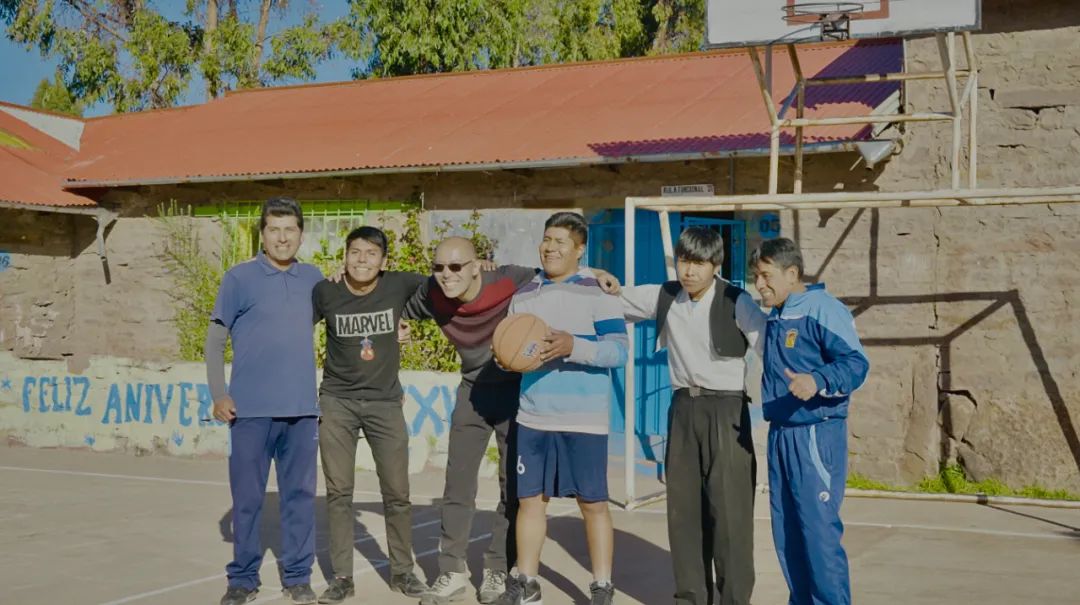
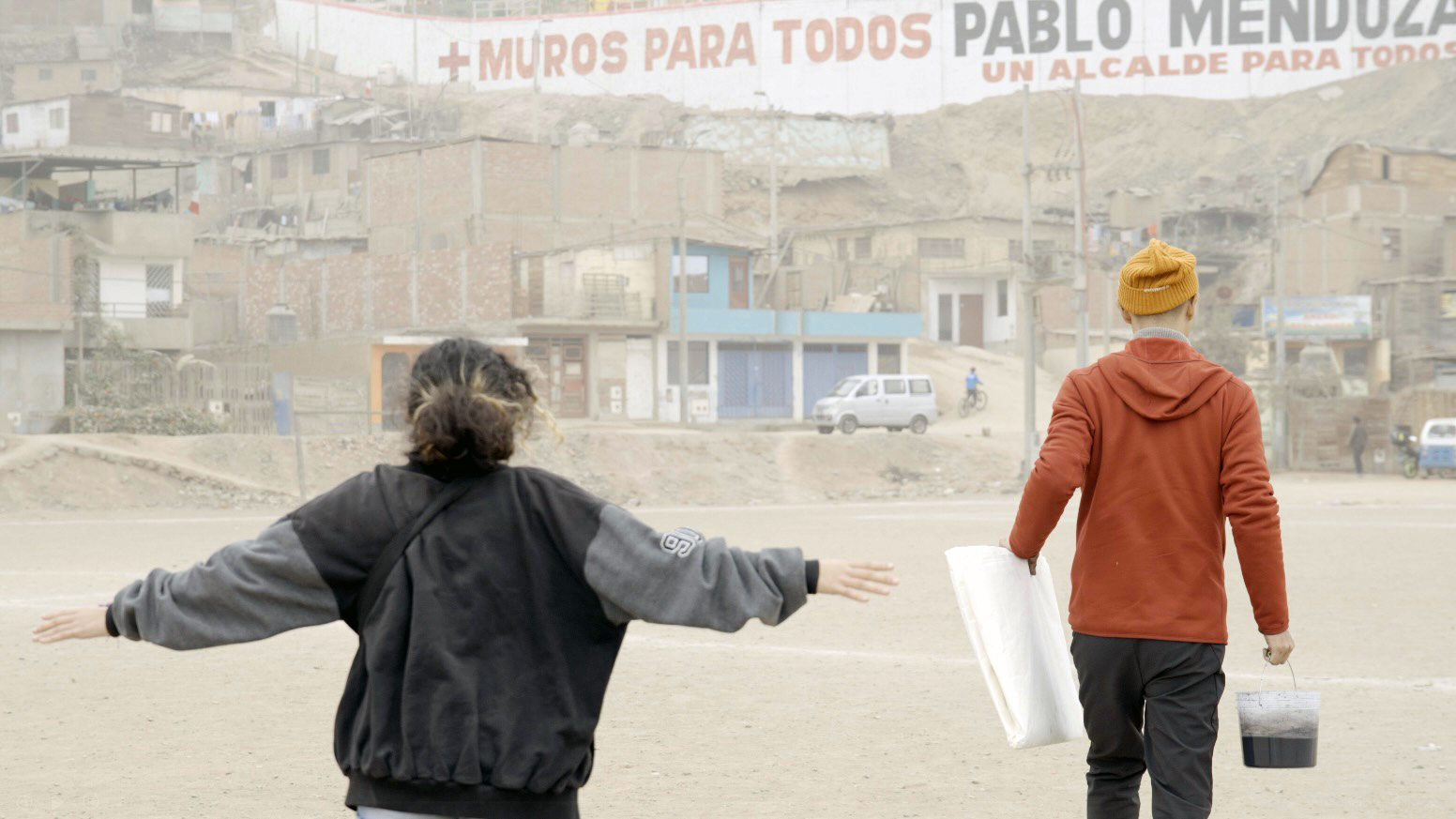


Reunion at the Opening with Workshop Participants Who Traveled to Lima from Various Regions
Thanks to: Luo Yunfei, Museo de Arte de Lima (MALI), COSAS
In the exhibition hall, photos of every workshop participant are neatly displayed in front of the work, prompting people to recall and try to “find themselves” in the giant painting—to see how a single drifting ink mark weaves into the complex trajectories of the crowd, to sense another “me” and “us” in a completely different context. For the first time, Indigenous visitors from various communities in Lima take group photos with long-settled urban strangers. In each other’s eyes, they may still represent a certain kind of “exoticism.” It is unknown whether, in that moment of stepping into each other’s gaze, certain cracks quietly healed, and a certain resonance began to form.
“I don’t know how to express what it feels like to be part of this work. I think Wu has done something remarkable. I can’t express how proud I am of him. Coming to Lima feels like a dream to me. I saw my brushstroke, it was together with the others, and I could barely recognize it. But once I found it, I don’t know why—it looked so happy. I can’t wait to take these gifts back to Chinchero for everyone. We’ll be waiting for Wu to return there too.”
Yenny Quispe Quillahuamán is from Chinchero. She brought the artist a handmade bracelet woven from baby alpaca wool and carried back to her community the 500 Brushstrokes for Peru print prepared by the artist for each participant.
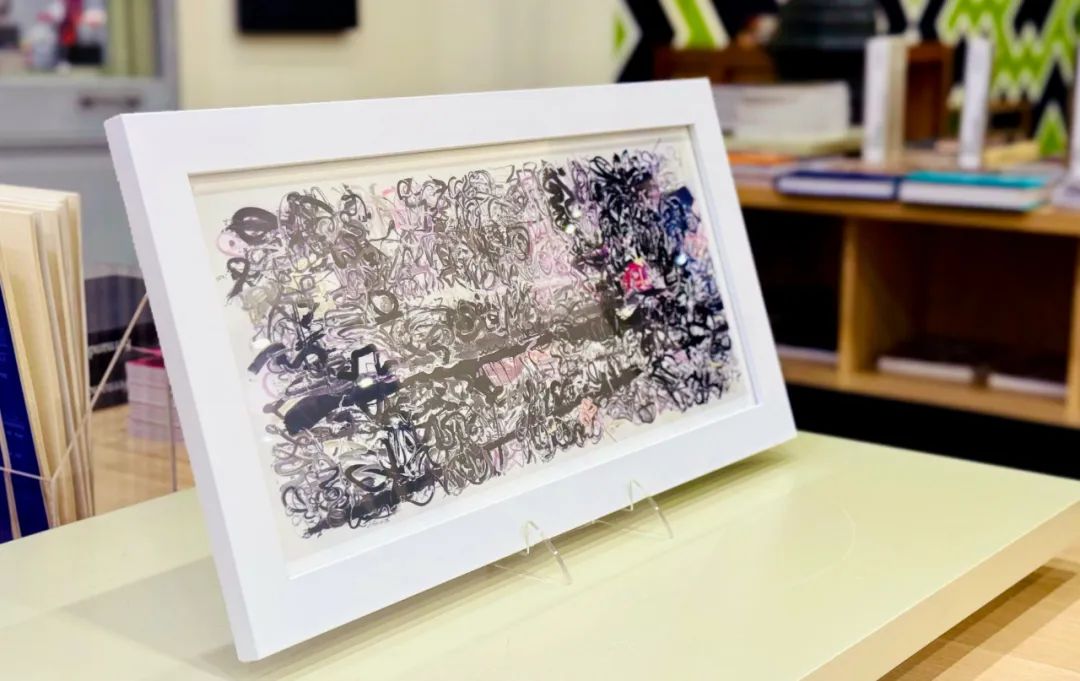



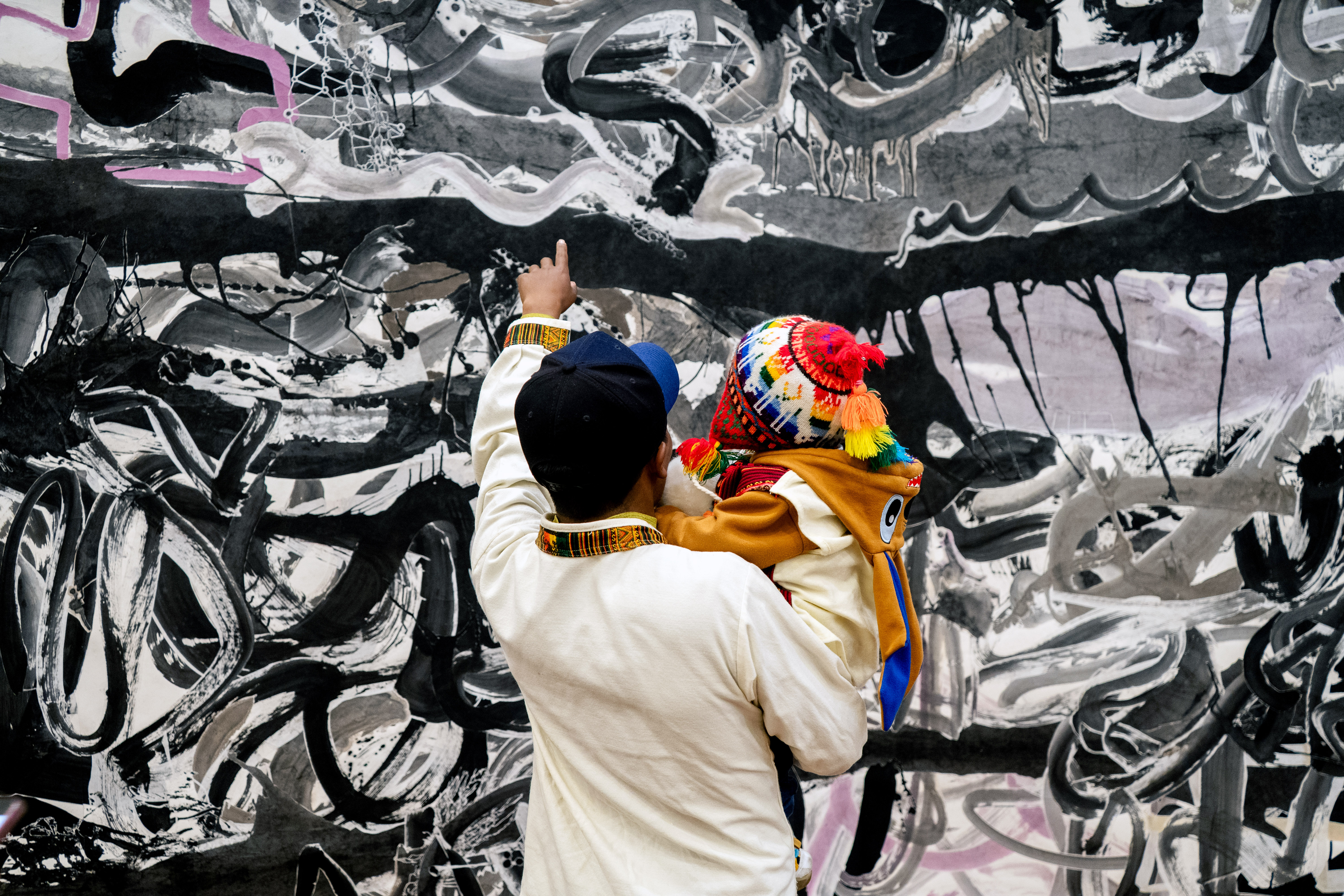





Opening Scene – 500 Brushstrokes: An Abstract Portrait of Peru
Thanks to: Museo de Arte de Lima (MALI), COSAS
Like an unfinished narrative map of Peruvian society, this exhibition calls for a return to the body, to participation and expression. It discovers the vitality generated by the connections and fusions among diverse individuals in contemporary society. By building a space of empathy that transcends language, identity, and position, it echoes the values of inclusion, respect, and peace.
The exhibition also reaffirms the original function of art—that when we cannot communicate through each other’s language, art can still activate the potential structure of collective human empathy, revealing the power of transcending difference, inspiring creativity, and gathering shared emotion. At a time when hyper-technologization and global identity crises are becoming increasingly prominent, this feels especially important. This exhibition is both the result of a cross-cultural exchange project carried out in Peru and a social experiment grounded in humanistic care. It explores new paths for artistic cooperation across communities and sparks imagination around new paradigms for global public cultural exchange.
As a unique public cultural event, this project has received the honorable support of Belmond since its inception. Belmond’s properties in Lima, Cusco, the Sacred Valley, and Machu Picchu—as well as the Hiram Bingham train and Andean Explorer train—have provided essential encouragement and backing for the long journey and return of this artwork. Cecily Cook, Carrie Tsoi, Kino, PIFO Gallery, and SPURS Gallery also gave crucial support to make this exhibition possible.


Exhibition Information
500 Brushstrokes: A Collective Abstract Portrait
500 TRAZOS: UN RETRATO ABSTRACTO DEL PERÚ
Museo de Arte de Lima, First Floor, Gran Hall
July 9 – August 10, 2025

About Museo de Arte de Lima (MALI)
Located in the capital of Peru, the Museo de Arte de Lima (MALI) is one of the country's largest and most influential non-profit art institutions. With over 12,000 pieces in its collection, MALI is the only museum in Peru with a comprehensive art historical collection that spans across time. Highlights from this extensive collection are displayed in approximately 4,500 m² of exhibition space, covering Pre-Columbian, Colonial, Republican, and Contemporary periods—bearing witness to centuries of cultural transformation. The collection and exhibitions are supported by the preservation and safeguarding of local cultural heritage, and the museum’s library and archives are among the most important art historical research centers in Peru. In recent years, MALI has continued to support local and related contemporary art practices and research through high-quality international exhibitions, publications, and public programs, gradually becoming an indispensable cultural hub within the South American and global contemporary art ecosystems.

